A head-scratcher. That’s what I would have called it when I was a kid. Before I’d learned words like conundrum and enigma. I’m talking about coffee and Mexico. Here’s a country that experts believe produces some of the world’s best coffee. Yet here’s a country where experts believe most of the coffee that’s consumed in the country is absolute crap.
That’s one of the many subjects, almost all about food and drink of course, that Kirsten West and I were discussing at lunch. Kirsten is perhaps even more passionate about food than Don Day which probably makes both of us outright freaks to the average Jose in San Miguel.
Kirsten originally came to the Americas from Europe to work as an au pair in San Francisco. At lunch she recalled the day of her arrival, after almost endless travel time via Icelandic Airways, being served a cup of that absolute crap coffee that’s most often consumed in Mexico, and breaking into tears.
It was at her first cooking job in the U.S., working for a very wealthy (he went to his club each day in a 1939 Rolls-Royce), elderly couple in the very, very upscale Pacific Heights, that Kirsten West first began to cook seriously. And one of the first little tricks she learned…and it’s still a good one today…was to bury an ice-cube in a hamburger patty for those who like it well-seared on the outside and bordering on blue on the inside.
Kirsten’s cooking career continued when she became a part of California’s Renaissance Faire, preparing endless plates of strawberry crêpes first in San Francisco and then in Los Angeles. It was also in L.A., that she had her first catering business and her first restaurant, Cafe Berlin. And where she had a stint as the personal chef for Michael Philip Jagger…yes, that English bloke better known as Mick.
My apologies for not getting any juicy Stones gossip out of Kirsten but she did tell me, “Mick never told me what to cook…except once when he wanted a North African theme for a party…and always ate what was put in front of him.”
Kirsten suggested Oso Azul, the new cafe on Zacateros as a good place to meet for lunch. Kirsten’s heritage is half German and half Danish. Jens and Bo, the co-owners of Oso Azul, are 100% Danish, both in heritage and personality (a comment I can best explain by saying I’ve never met a Dane I didn’t like). And Kirsten had helped with comments and suggestions to Jens and Bo at tastings in the development of the restaurant’s menu.
We started with limonada. But not ordinary limonada. Before ordering, Kirsten reached into her purse and, presto, out came a lima and, no, that’s not a spelling error. Lima is the fruit that used in the Yucatan specialty sopa de lima and, when I’d written about the dish the previous week, I hadn’t mentioned that the original recipe calls for lima not lime. And Kirsten West is a stickler for authenticity, particularly when it concerns Mexican cuisine. It’s difficult to explain exactly what a lima is; halfway between an orange and a lemon isn’t too far off. But what about my lemonade? No problem. Kirsten reached into her purse again and, abracadabra, out came a conventional lime for my drink.
Kirsten West’s intense interest in Mexican cuisine began 29 years ago when she was living in L.A. and decided to go on a 12-day culinary tour of Mexico with Marilyn Tausand’s “Culinary Adventures” where she had some life changing classes with Diana Kennedy, the woman who, today, is considered the person who, almost singlehandedly, put Mexican cuisine on the world map. Diana and Kirsten became friends and colleagues and, it didn’t take long before Kirsten was as hooked on Mexican as Diane.
“I totally fell in love with the food and the markets”, Kirsten told me. “I was almost helpless as far as having any other direction in life.”
“I loved the fact that I didn’t have to make a single decision about food for almost two weeks”, Kirsten continued. “And every dish was a total mind blower.”
If Diane Kennedy is the queen of Mexican cuisine, Rick Bayless is the crown prince. Kirsten West’s appreciation of Mexican cuisine was culminated when she met Rick Bayless in Oaxaca and, subsequently, spent eight years in Chicago working with him on his PBS television show and testing all of the recipes that went into his book, Mexico, One Plate At A Time.
Oso Azul‘s menu is fairly conventional. Nothing exotic. Nothing that wanders far from the norm. It’s based on simple pleasures, the kind of things you can prepare at home but, for most people, not quite as well as Oso Azul can prepare them. The focus is on eggs and sandwiches with a hint of Scandinavia on items like a cured dill salmon plate. And, though Denmark now has the world’s number one rated restaurant in Noma, a restaurant that specializes in local sourcing, there’s nothing foraged from San Miguel’s surrounding smoky blue mountains, no creatures caught in waters from San Miguel’s crystal springs. But if you’re a smart marketer in San Miguel de Allende, like I suspect Jens and Bo, Oso Azul‘s owners are, and targeting an expat community with an average age somewhere north of fifty, the straight and narrow is definitely the road to take.
It was Jens who took our order. For Kirsten West it was the tuna salad sandwich. For me it was the omelette. Kirsten’s sandwich came decomposed with a generous little mountain of tuna combined with apples, celery and lime mayo plus a potato salad on the side. Jens apologized for Kirsten’s bread. His regular baker had failed him and he’d had to fall back on a very Mexican baker for the bread. Which meant a little too much sugar and no crisp on the crust. But the sandwich still worked. And Kirsten had no complaints.
I’m always nervous ordering things that a guy like me, with some very basic culinary skills, can easily put on the table at home. But, as much as I like omelettes, I seldom make them at home. My omelette at Oso Azul was stuffed with goat cheese and spinach. It came with sliced tomatoes and another something I seldom make at home, despite their name, home fries. And home fries are where my heart is.
As Kirsten savored her sandwich, I asked her where she likes to eat in San Miguel de Allende, particularly if she’s seeking out good Mexican food. “I’m fond of La Sirena Gorda but one of the reasons is it’s very close”, said Kirsten. “If I have someone visiting, I like to take them to La Alborada. Neither restaurant is trying to be a star. They just turn out good, honest Mexican food, day after day, night after night.”
Oso Azul means blue bear in Spanish and Oso Azul features a logo with a blue bear carrying a surfboard, in the very landlocked San Miguel de Allende. I thought if I sat there in the restaurant’s courtyard, a cozy square decorated in similar cool colors to the logo, and thought about it long enough, I’d get the reference. I’d figure out the relationship. But I didn’t.
“So what’s with the bear and the board?”, I asked Jens.
“Don’t you like it?”, said Jens.
“Yes, I like it”, I replied.
“Well that’s what we wanted”, said Jens, “a symbol that people would like and, besides, a Dane here in the middle of the desert is a little like a bear with a surfboard.”
It was time for coffee. It was the moment I’d been waiting for. In its short life, Oso Azul has already forged a reputation for its coffee. Bo Blindkilde, Oso Azul‘s second partner, owns a small coffee plantation in Veracruz. And Oso Azul is roasting its own beans every few days right on the premises.
Before our coffees arrived, I shared a recollection with Kirsten of one of my first ever San Miguel coffee experiences. Many years ago, I was walking up Salida a Celaya when I spotted a place with the word cafe on the awning. I decided that a place with the word cafe on the awning would serve good coffee. I was wrong. I had a good view of the kitchen and I could see the proprietor dipping his spoon into a small brown jar with a very recognizable label. I could then see him holding the mug under the hot water tap. I knew what was coming. It was that coffee that’s so often consumed in Mexico that was, yes, that absolute crap that I’ve already mentioned a couple of times.
A lot of water has flowed under the bridge since then. And a lot of coffee grounds have been rinsed down drains. Today, there’s some superb coffee being served in Mexico. And a lot of it on Calle Zacateros in San Miguel de Allende.
Wondering why a couple of Danes would open a cafe? Well Denmark ranks fourth in the world in the amount of coffee consumed per capita. And ahead of it? The three other Scandinavian countries, Norway, Finland and Sweden.
There’s also a lot of history to Europeans owning cafés in Mexico. The 1882 version of the Nueva Guia de Mexico listed 44 cafes in Mexico City as coffee began to replace atole and chocolate as the social drink of choice. And it’s thought that almost all of those cafés were owned and operated by people of European birth.
And why would a Dane own a coffee plantation in southern Mexico. Bo’s wife is Mexican which obviously had an influence.
At about the same time as my cappuccino arrived and Kirsten’s cafe Americano arrived, so did Bo. He’d been picking up a friend in Mexico City.
Today, Mexico is the number one producer in the entire world of organic coffee and all of the coffee that’s grown at Bo Blintkilde’s plantation and served at Oso Azul is certified organic. But it’s a statistic that’s hard to maintain, at least, according to Bo, who’d now joined us at the table.
“Rust (the common name for a disease that affects the leaves of coffee plants) is especially severe this year. When you’re faced with losing as much as 70% of your crop, it’s easy to see why someone would decide to spray chemicals. It may be the only way to survive”, said Bo.
Coffee is one of the world’s most labor intensive crops. The different times between when the first berry and the last berry on a bush ripens from green to red to the almost black color that says it’s ready to be picked is weeks and requires each plant to be repicked over and over.
“I could survive if I lost a year but there’s also my pickers to think of”, continued Bo. “It’s one whole family…about ten people…that rely on the work.”
“The big guys just go in and spray. And I could use pesticides and still be considered organic, so it’s a real quandary. I will make an exception one year if I absolutely have to. I really have no choice.”
Kirsten West arrived in San Miguel de Allende in 2006 and, not long after, spent a year and a half running Sazón, then the town’s most upscale and most successful cooking school. I asked her how she liked Oso Azul‘s coffee.
“This is fabulous”, said Kirsten. “I would absolutely love to visit the plantation.”
“And could you tell the difference between coffee grown on a plantation in Veracruz and one of the other two big coffee growing states, Oaxaca or Chiapas?”, I asked, knowing there was absolutely no way that I could.
“I’m not sure”, said Kirsten.
“Absolutely, I could”, said Bo.
“It’s all related to climate. Veracruz is very wet, always humid. There’s next to no water in Oaxaca. So coffee from Veracruz is fruitier, more exotic.”
“And is coffee from Veracruz better?” Kirsten asked Bo.
“I will never say my coffee is the best”, said Bo, “but I will say it’s the freshest and the best processed you can buy.”
Bo told us that the bulk of Mexican coffee is poorly picked and processed, so the good flavors are masked by bad flavors from under-ripe coffee berries and inconsistent processing.
“There just hasn’t been a history of discerning drinking in this country”, said Bo.
So where, when and why did Mexico begin drinking that absolute crap coffee that I’ve previously referred to in this blog.
Well, Helen Seargeant, who grew up in Southern Mexico, reported that “…the Tacaneca Indians…reserved coffee, chocolate, atole, posol and liquor for festivals in their home villages. They integrated coffee into their native celebrations to the point that they quite reasonably enough used comal coals to toast tortillas and roast coffee. The coffee was ground into powder, boiling water and sugar were added. Their method was to make a thick coffee syrup, (coffee essence) so thick it was supposed to stick to the side of its bottle, that was added to hot water or milk.”
Sound familiar? Well perhaps you have to be old enough to have been raised on coffee that came out of a bottle. My bottle was a masterpiece of graphic design and had the word Camp and an illustration of a Scotsman being served by an East Indian (the new label design shows them drinking together). My father called it the “sludgy Scottish treat”. I won’t tell you what I called it but it was a somewhat less polite synonym for absolute crap.
In Coffee Consumption in Mexico, Steven Kopik says “French courtiers who accompanied Emperor Maximilian in 1863 were dismayed with the quality of the coffee they encountered in Mexico. Countess Paula Kollonitz complained that coffee, which grows here of the best kind, is so badly prepared that it is almost impossible to drink it.”
83% of what is drunk in Mexico is what the industry calls soluble coffee. What most readers of this blog would probably call instant coffee. What most Mexicans call Nescafé. And, as you may have guessed by now, what I referred to earlier as absolute crap. Particularly when compared to fresh coffee. And especially when compared to a fine cup of Oso Azul coffee.
Do Jens and Bo have aspirations to expand their borders and perhaps convert more Mexicans to the joys of good coffee?
“Well I’m definitely giving a little thought to opening a few more Ozo Azul‘s”, said Bo. “Perhaps in Queretaro or Celaya.”
He continued, with a chuckle, “So watch out, Starbucks!”
Cafe Oso Azul is located at Zacateros 17 in San Miguel de Allende, Mexico. They are open from 8:00 am to 5:00 pm every day except Wednesday.
Kirsten West is available to conduct cooking classes or cater meals in your home with an emphasis on the best of Mexican cuisine. She can be reached at kirstenwest@mac.com or kirstenwest.blogspot.com.


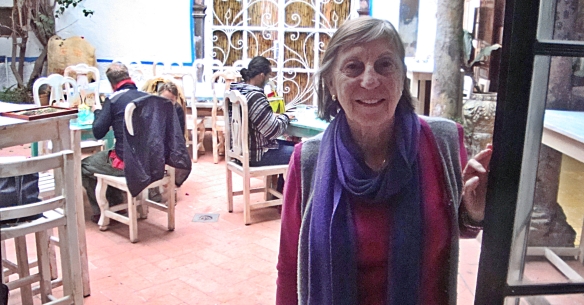
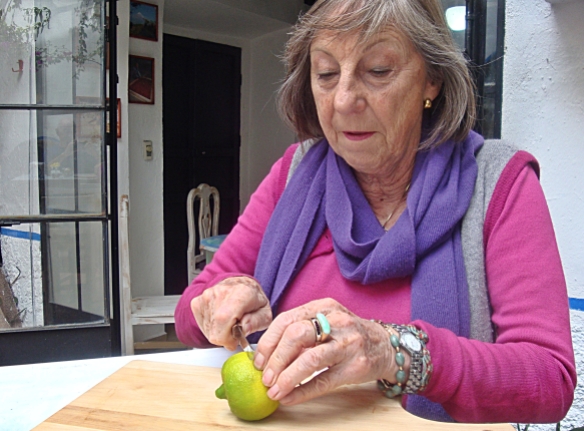
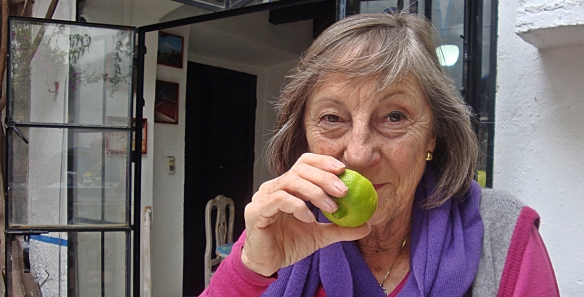


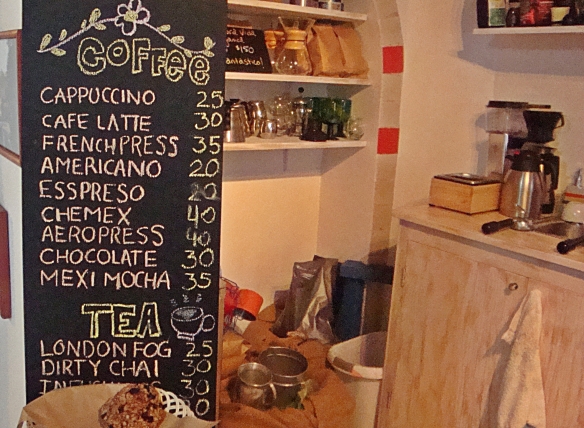
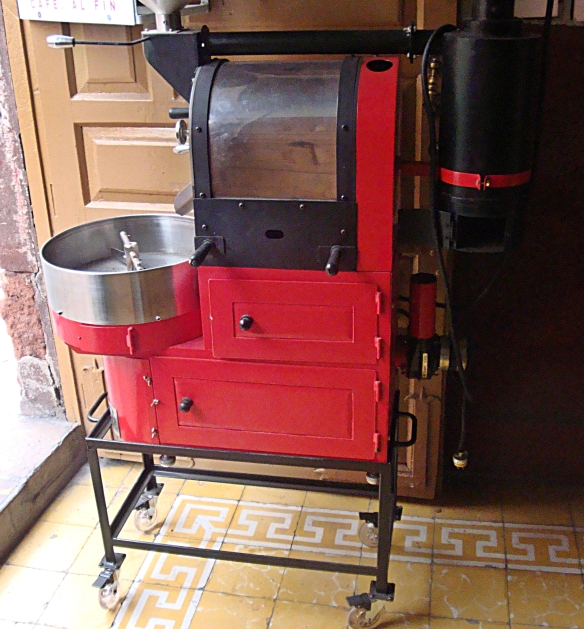
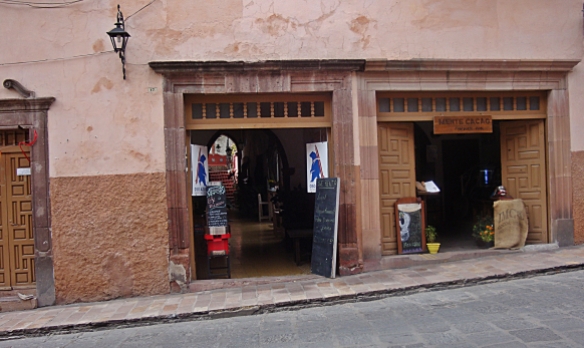
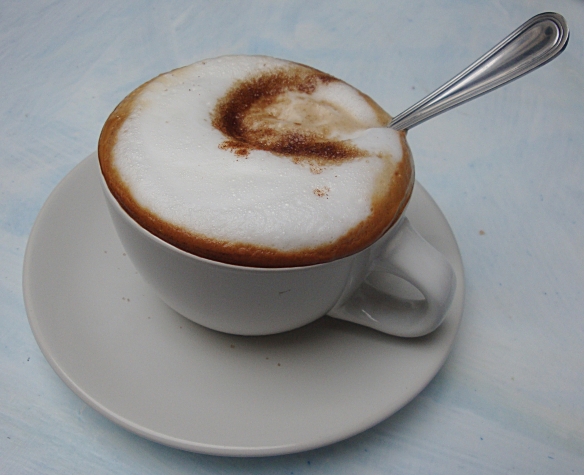
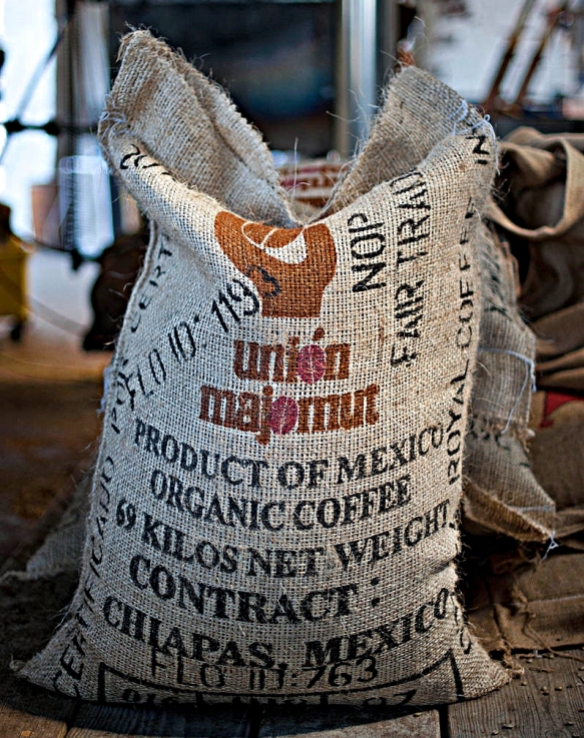

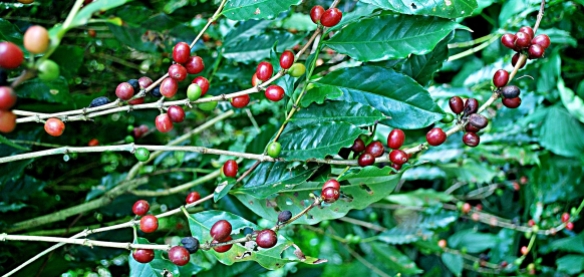
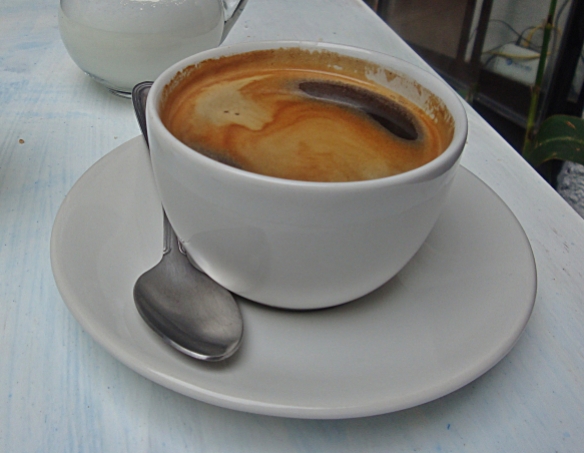
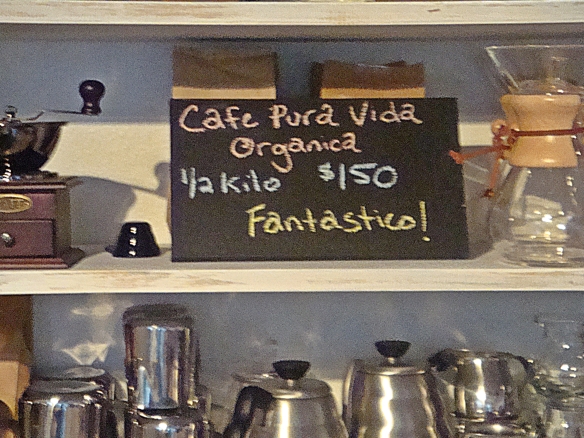

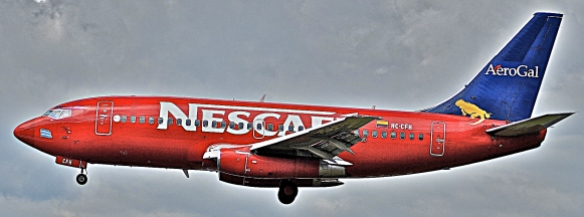
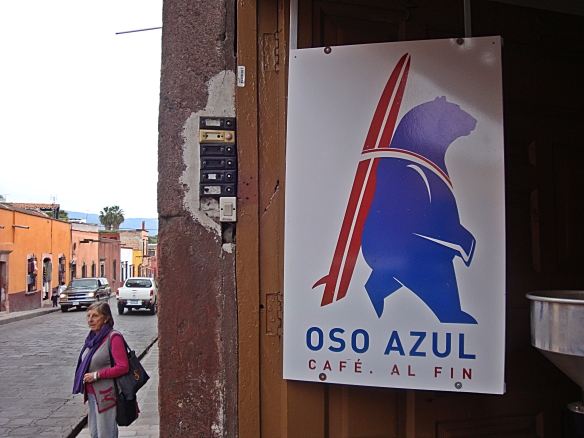
Very interesting and educational Don Day; I grind and brew my beans at home and next time I need some I’ll definitely go to Oso Azul. Also nice to know about Kirsten, I’ll check out her blog.
Dixie,
Something for you to look forward to!
Jayne Clark San Miguel de Allende, Gto. Mexico
>
Why Mexicans drink cheap coffee? Because the Best Coffee as most of the Best of Anything is exported.
I really enjoyed reading this post! My wife and I stopped in a few weeks ago for breakfast and loved it! We also loved the coffee!